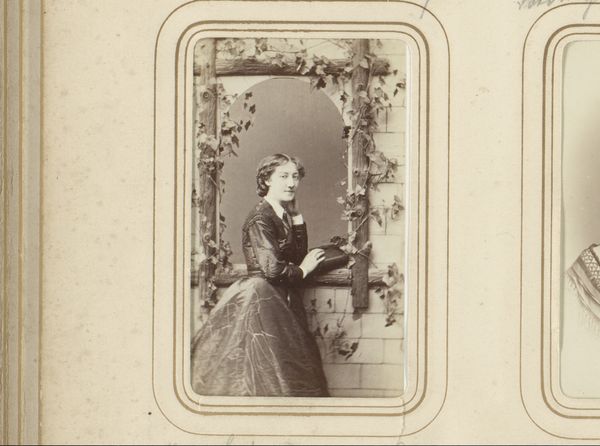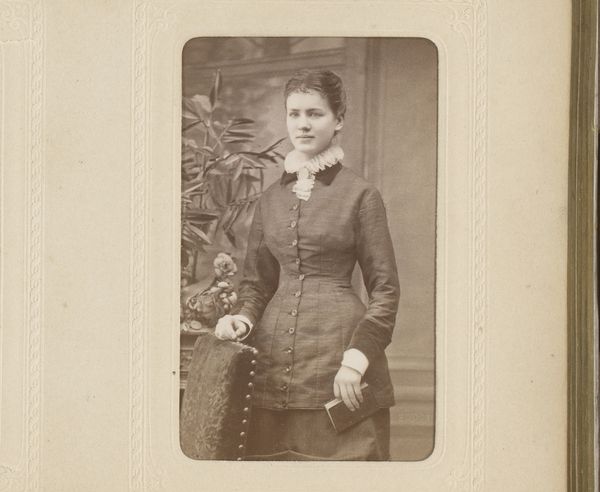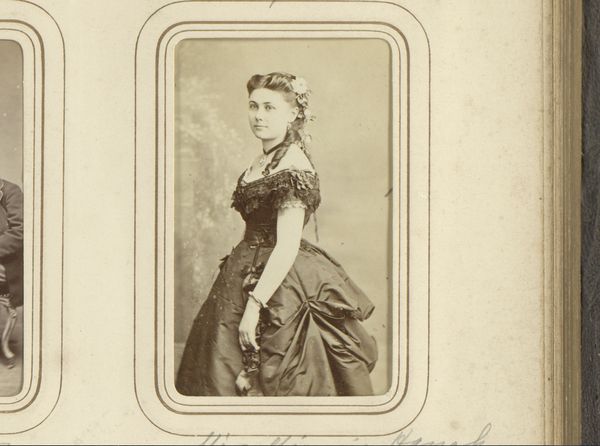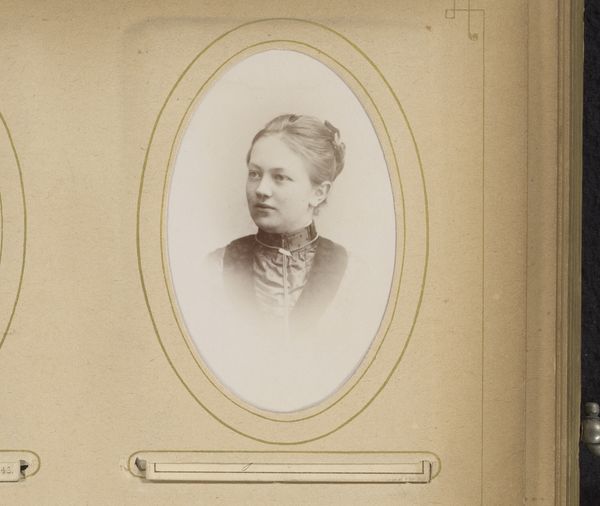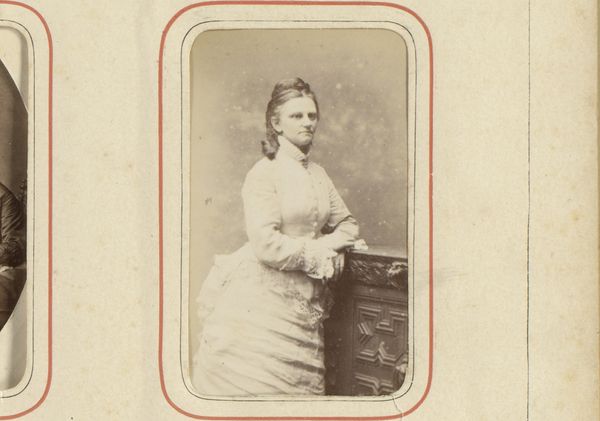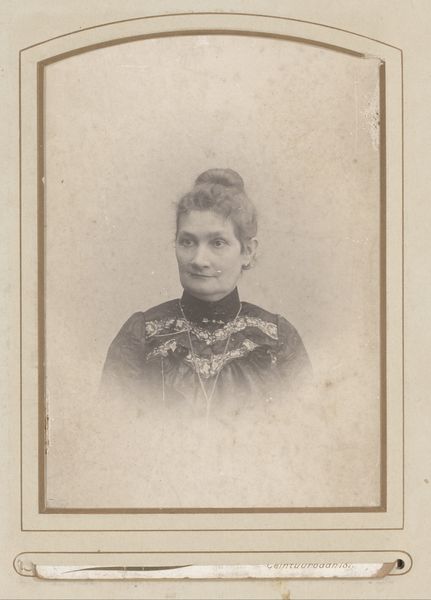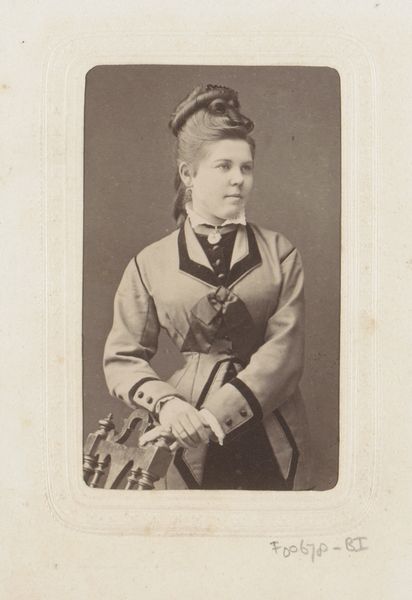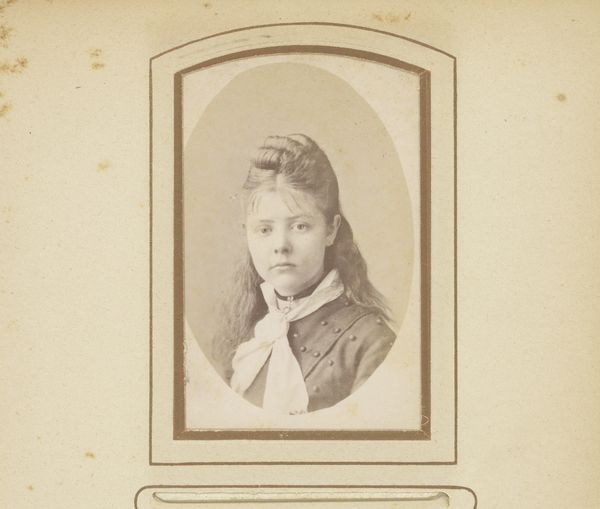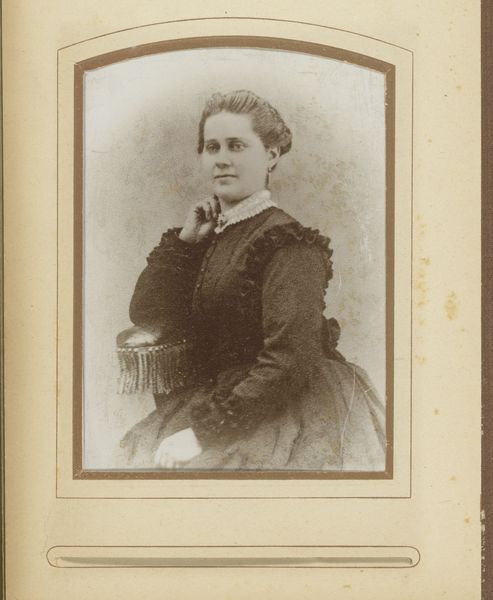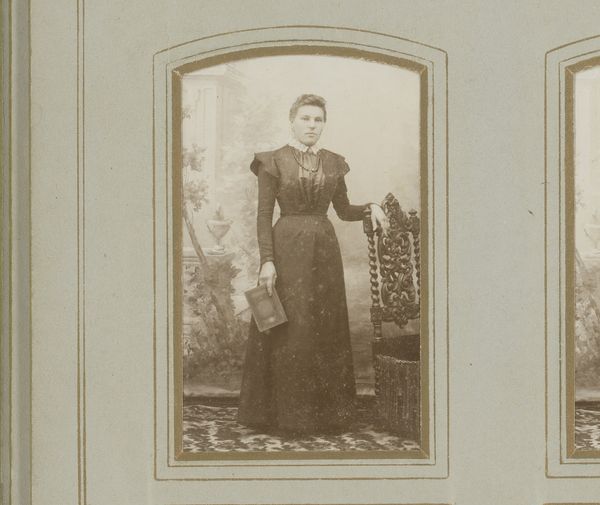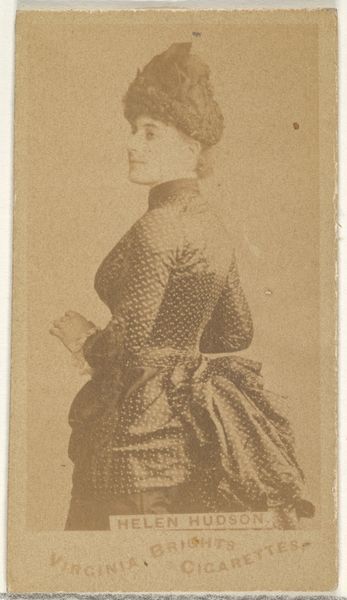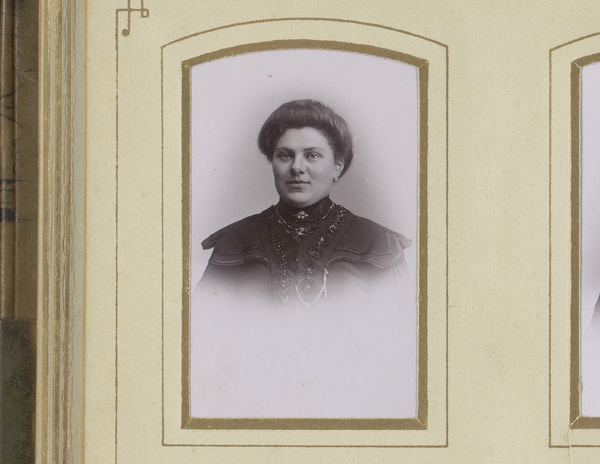
photography, gelatin-silver-print
#
portrait
#
muted colour palette
#
photography
#
brown and beige
#
gelatin-silver-print
#
19th century
#
watercolour illustration
Dimensions: height 85 mm, width 51 mm
Copyright: Rijks Museum: Open Domain
Curator: Ah, I am intrigued. Is it just me, or does this portrait exude a kind of... hushed solemnity? Editor: You’re right; it does. The piece is listed as "Portret van een vrouw" attributed to H. Camen & Sohn, we think somewhere between 1860 and 1900. It’s a gelatin silver print, awash in muted browns and beiges typical of photography from the 19th century. Curator: That phrase "gelatin silver print" just glides off the tongue. Honestly, it's more than just the technical aspect. The entire piece feels… bottled, contained. It's not just her pose; there's this subtle tension, maybe in the tightly fitted plaid dress, reflecting social constraints? Editor: The tartan certainly speaks of identity and belonging. The careful posing hints at formality, the sitter consciously projecting an image. I wonder, does the somewhat rigid pose also mask a vulnerability? Early portrait photography was hardly candid, a real performance for posterity. Curator: A performance indeed! All those heavy garments; corsets pulling tight, forcing you to behave... almost like a costume. And that neutral, unreadable expression. What thoughts, what dreams were tucked away behind that facade, trapped as if the moment will tell more than you wish. Is it only me that finds this unsettling? Editor: Perhaps it's unsettling because portraiture, from icons to family snapshots, has always been about negotiating memory and presentation. These visual records, seemingly objective, are often deeply coded. And in an age when photographs were relatively rare, there was so much more at stake. Curator: Exactly! This makes me think about how often images lie even if that’s not their intent. Still, this lady manages to make me think; what's going on in this frame – an entire era in sepia. There's beauty here too in the tones and lines. Editor: The charm is how they connect to our emotional fabric, whispering stories about identity and remembrance across generations. It’s intriguing to think about what happens when personal stories merge with our wider understanding of visual culture and society.
Comments
No comments
Be the first to comment and join the conversation on the ultimate creative platform.
